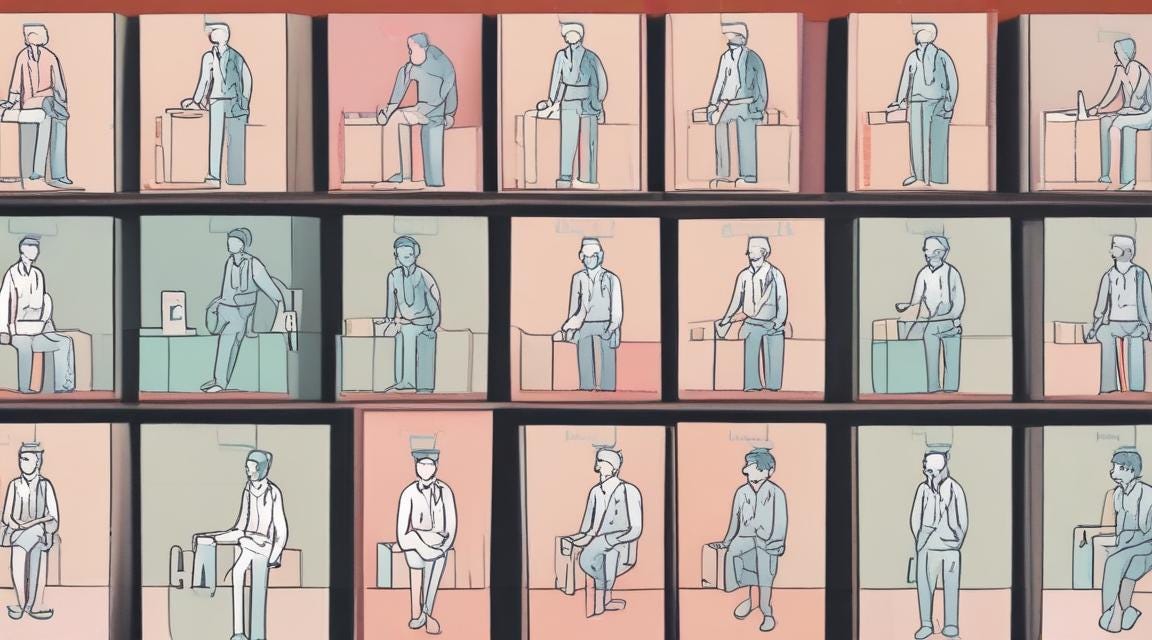What Noncompete Agreements and Talent Hoarding have in Common
The game theory of talent stickiness and talent hoarding, and how we can overcome it
Last week the Federal Trade Commission (FTC) voted to outlaw most noncompete agreements. An estimated 18% of the U.S. workforce is subject to a noncompete, so this rule, if it goes into effect, has the potential to transform the labor market. Critics argue such a sweeping ban may not be the optimal policy, but the public’s general reaction has been positive. The hope is that freeing workers from noncompete agreements will increase labor mobility and increase startup formation, not to mention hopefully reducing the harms of exploitative use of the agreements.
The Game Theory of Worker Mobility
For businesses, noncompete agreements are a double edged sword. As economist Alex Tabarrok succinctly puts it:
The problem with non-competes is that every firm wants non-competes on the workers it fires but no firm wants non-competes on the workers it hires.
Alex goes on to explain that noncompete agreements create what is known in game theory as a prisoner’s dilemma. We are in a situation where both firms restrict their worker movement (defect / defect), but if there were no noncompetes, we’d all be better off (cooperate / cooperate).

We would be better off with less-sticky talent for a couple of reasons. First, having no noncompete agreements will enable firms to recruit each others workers more often, opening up new sources of talent.
Secondly, research has shown12 that worker mobility is a key driver of innovation. It may not be a coincidence that Silicon Valley, famous for the constant shuffling of tech workers between firms, is located in California where there has been a long-standing ban on noncompete agreements.
Internal Labor Markets and Talent Hoarding
The labor market is not just between-firms however. Many (especially larger) organizations enjoy the benefits of vibrant internal labor markets (ILMs) where employees can be recruited, and transfer or be promoted to new roles within the organization.
Despite the benefits of ILMs as a resource, HR and talent practitioners may have observed the same “prisoner’s dilemma” dynamics at work. Talent hoarding is a well-documented behavior that some managers employ - ostensibly out of fear of losing valuable talent - which ultimately backfires and causes employees to look externally.
This is a result of the exact same dynamics: if managers cooperated and encouraged their talent to move within the organization, it would benefit everyone. In fact, recent research from the Academy of Management adds to the research supporting the benefits of internal mobility. But, it’s important to acknowledge that in the absence of overarching guidance or intervention, individual managers may be incentivized to stonewall their people.
What Organizations can do to Encourage Internal Mobility
Moving the behaviors of a organization is a huge change management task, but overcoming talent hoarding needs to be a part of any internal mobility or talent marketplace strategy. Understanding the underlying game theory points us to a few things that can be done to overcome this:
Give managers security and assurance that if they lose an employee, it can be replaced (backfilled) by someone inside or outside of the organization.
Emphasize the win-win nature of worker movement, and its connection to overall organizational goals (career development, innovation, cross-functional collaboration).
[Bonus] Use AI / ML to actively re-recruit your workers: The increasing availability of both open-source tools and vendors has made it easier than ever for recruiting teams to identify internal talent that might be a good match for an open position.
https://www.semanticscholar.org/paper/The-Impact-of-Restricting-Labor-Mobility-on-and-Jeffers/39807c55f3a816156962f0e786c02a2ba151a31b?p2df
https://www.sciencedirect.com/science/article/pii/S0167268114003254






I really appreciate how you outlined ideas for incentivizing against internal talent hoarding. Ideally, managers would always act in the best interest of the company and their team members, but we know that's easier said than done.
I also like the idea of establishing a metric to identify 'talent exporters' among teams or departments, which could support internal mobility. Measure it and promote it!